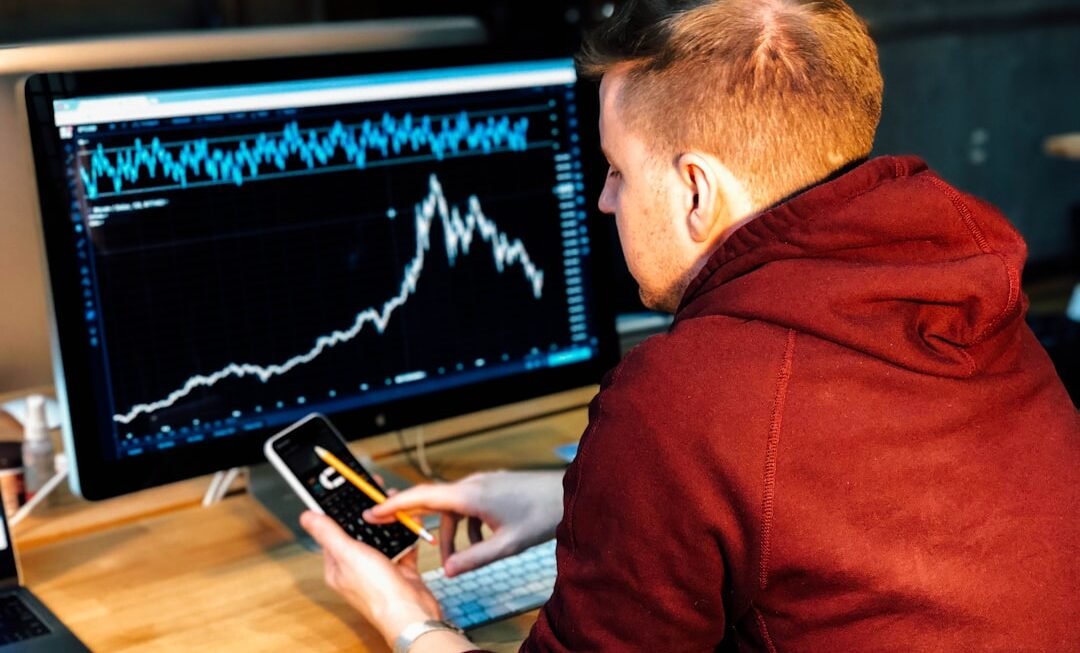In the rapidly evolving landscape of financial markets, multi-asset trading platforms have emerged as pivotal tools for investors and traders alike. These platforms allow users to access a diverse range of financial instruments, including stocks, bonds, commodities, cryptocurrencies, and foreign exchange (forex), all from a single interface. The rise of multi-asset trading platforms is largely attributed to the increasing demand for flexibility and efficiency in trading.
As investors seek to diversify their portfolios and capitalize on various market opportunities, the ability to manage multiple asset classes seamlessly has become essential. The concept of multi-asset trading is not merely a trend; it reflects a fundamental shift in how individuals and institutions approach investment strategies. Traditionally, traders would rely on separate platforms for different asset classes, leading to fragmented experiences and inefficiencies.
However, with the advent of sophisticated technology and the integration of various financial instruments into unified platforms, traders can now execute complex strategies that span multiple markets. This integration not only enhances the user experience but also provides valuable insights through comprehensive analytics and real-time data.
Key Takeaways
- Multi-asset trading platforms offer the ability to trade a variety of financial instruments, including stocks, cryptocurrencies, forex, and commodities.
- Using a multi-asset trading platform provides diversification and risk management benefits for traders and investors.
- Features of multi-asset trading platforms include advanced charting tools, real-time market data, and customizable trading interfaces.
- When choosing a multi-asset trading platform, consider factors such as security, fees, available assets, and user interface.
- Multi-asset trading platforms allow for seamless management of stocks, cryptocurrencies, forex, and commodities in one place, streamlining the trading process for users.
Benefits of Using a Multi-Asset Trading Platform
One of the most significant advantages of utilizing a multi-asset trading platform is the convenience it offers. Traders no longer need to juggle multiple accounts across different platforms, which can be cumbersome and time-consuming. Instead, they can manage their entire portfolio from one location, streamlining their trading activities.
This centralization allows for quicker decision-making and execution, as traders can monitor various markets simultaneously without the need to switch between different interfaces. Moreover, multi-asset trading platforms often come equipped with advanced analytical tools that facilitate informed decision-making. These tools can include charting software, technical indicators, and risk management features that help traders assess market conditions and identify potential opportunities.
By having access to a comprehensive suite of analytical resources within a single platform, traders can develop more nuanced strategies that take into account the interplay between different asset classes. This holistic approach can lead to improved performance and risk management.
Features of Multi-Asset Trading Platforms
Multi-asset trading platforms are characterized by a range of features designed to enhance the trading experience. One of the most notable features is the ability to execute trades across various asset classes in real-time. This functionality is crucial for traders who engage in arbitrage or those who wish to hedge their positions across different markets.
The speed at which trades can be executed is often a determining factor in a trader’s success, making this feature indispensable. Another key feature is the integration of educational resources and market research tools. Many multi-asset platforms provide users with access to webinars, tutorials, and market analysis reports that can help them stay informed about market trends and developments.
This educational component is particularly beneficial for novice traders who may require additional guidance as they navigate the complexities of different asset classes. Furthermore, some platforms offer demo accounts that allow users to practice trading strategies without risking real capital, fostering a more confident trading environment.
How to Choose the Right Multi-Asset Trading Platform
Selecting the appropriate multi-asset trading platform requires careful consideration of several factors. First and foremost, traders should evaluate the range of assets available on the platform. Not all platforms offer the same selection of instruments; therefore, it is essential to choose one that aligns with an individual’s trading goals and interests.
For instance, a trader focused on cryptocurrencies should ensure that the platform supports a wide variety of digital assets. Another critical aspect to consider is the platform’s user interface and overall usability. A well-designed interface can significantly enhance the trading experience by making it easier to navigate through different features and tools.
Traders should look for platforms that offer customizable layouts, intuitive navigation, and responsive customer support. Additionally, it is advisable to read reviews and seek recommendations from other traders to gauge the reliability and performance of potential platforms.
Seamless Management of Stocks on Multi-Asset Trading Platforms
Managing stocks on multi-asset trading platforms is streamlined through various functionalities that cater specifically to equity traders. These platforms typically provide real-time stock quotes, allowing traders to monitor price movements instantly. The ability to set alerts for specific price levels or market events further enhances this management capability, enabling traders to react promptly to market changes.
Moreover, many multi-asset platforms offer advanced order types that go beyond standard market orders. For instance, traders can utilize limit orders, stop-loss orders, and trailing stops to manage their stock positions effectively. This flexibility allows for more strategic entry and exit points based on individual risk tolerance and market conditions.
Additionally, integrated portfolio management tools enable users to track their stock holdings’ performance over time, providing insights into overall investment health.
Seamless Management of Cryptocurrency on Multi-Asset Trading Platforms
The management of cryptocurrencies on multi-asset trading platforms presents unique opportunities and challenges due to the volatile nature of digital assets. These platforms often feature dedicated sections for cryptocurrencies, complete with real-time price charts and market depth information. Traders can easily switch between different cryptocurrencies, allowing them to capitalize on price fluctuations across various digital currencies.
Security is another critical aspect when managing cryptocurrencies on these platforms. Reputable multi-asset trading platforms implement robust security measures such as two-factor authentication (2FA), cold storage for digital assets, and encryption protocols to protect users’ funds from potential cyber threats. Additionally, many platforms provide educational resources specifically focused on cryptocurrency trading strategies, helping users navigate this complex market with greater confidence.
Seamless Management of Forex on Multi-Asset Trading Platforms
Forex trading is one of the most actively traded markets globally, and multi-asset trading platforms cater specifically to forex traders with specialized features. These platforms typically offer access to a wide range of currency pairs, including major, minor, and exotic pairs. The ability to trade multiple currency pairs simultaneously allows forex traders to diversify their strategies and manage risk more effectively.
Furthermore, multi-asset trading platforms often include advanced charting tools tailored for forex analysis. Traders can utilize technical indicators such as moving averages, Bollinger Bands, and Fibonacci retracements to identify potential entry and exit points in currency trades. Additionally, many platforms provide economic calendars that highlight key economic events impacting currency markets, enabling traders to make informed decisions based on macroeconomic factors.
Seamless Management of Commodities on Multi-Asset Trading Platforms
The management of commodities on multi-asset trading platforms offers traders exposure to essential physical goods such as gold, oil, agricultural products, and more. These platforms typically provide futures contracts or exchange-traded funds (ETFs) that allow traders to speculate on commodity prices without needing to hold physical assets. This accessibility makes it easier for investors to diversify their portfolios by including commodities as a hedge against inflation or economic uncertainty.
Moreover, multi-asset trading platforms often feature comprehensive market analysis tools specifically designed for commodities trading. Traders can access reports on supply and demand dynamics, geopolitical factors affecting commodity prices, and seasonal trends that may influence market movements. By leveraging these insights alongside real-time data feeds, traders can develop informed strategies that capitalize on price fluctuations in commodity markets.
In conclusion, multi-asset trading platforms represent a significant advancement in how traders manage diverse financial instruments. By offering seamless access to stocks, cryptocurrencies, forex, and commodities within a single interface, these platforms empower investors with the tools they need to navigate complex markets effectively. As technology continues to evolve, the capabilities of these platforms are likely to expand further, providing even greater opportunities for traders seeking to optimize their investment strategies across multiple asset classes.












